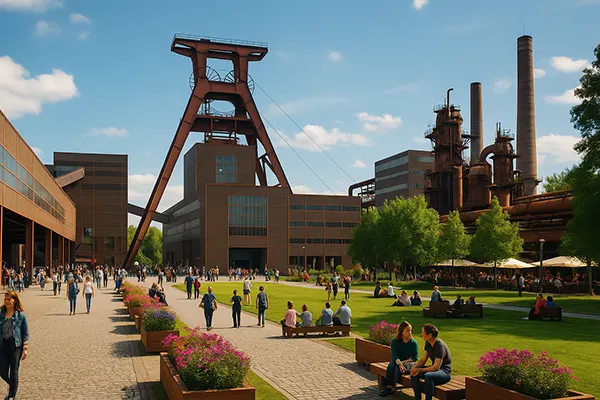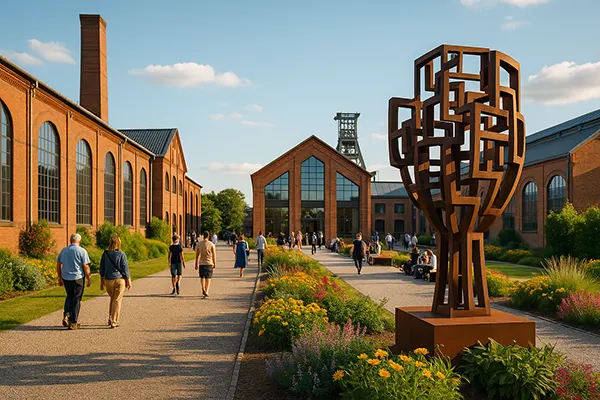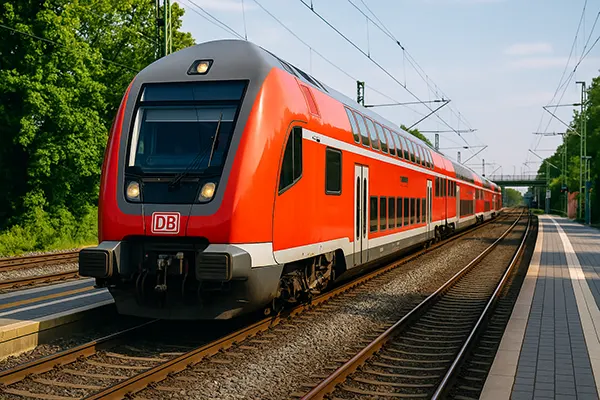From Coal to Culture: How Germany’s Former Industrial Regions Became Cultural Centres

For decades, Germany’s industrial heartlands symbolised coal dust, steel mills, and economic resilience. Yet by 2025, regions such as the Ruhr Valley, Saarland, and Saxony have evolved into dynamic cultural landscapes. The transformation from heavy industry to creativity is not just a story of economic reinvention, but of social renewal and environmental recovery.
The Decline of Industry and the Birth of a New Identity
During the 20th century, coal and steel defined Germany’s industrial might. The Ruhrgebiet alone produced millions of tonnes of coal annually, fuelling both domestic growth and export markets. However, global energy transitions, automation, and cheaper imports triggered the gradual decline of mining and heavy industry by the 1980s and 1990s. Thousands lost their jobs, and entire cities faced depopulation and social hardship.
The federal and regional governments recognised that recovery would require more than economic aid. Initiatives such as the International Building Exhibition Emscher Park (1989–1999) laid the foundation for sustainable transformation. Old industrial sites were reimagined as cultural landmarks, creating a unique aesthetic where heritage and creativity coexist.
By the early 2000s, industrial nostalgia gave way to innovation. Universities, art institutions, and start-ups moved into revitalised factory complexes. The focus shifted from extraction to expression — a deliberate effort to turn economic scars into cultural capital.
The Ruhr Metropolis: From Mines to Museums
The Ruhr region remains the emblem of this metamorphosis. Once Europe’s largest coal-mining area, it is now a cultural metropolis recognised by UNESCO and the European Union. The Zollverein Coal Mine Industrial Complex in Essen, once dubbed the “most beautiful coal mine in the world,” is now a museum and design centre attracting over 1.5 million visitors annually.
Other cities like Dortmund and Duisburg have embraced the same model. The Dortmunder U, a former brewery, has become a centre for art and digital creativity, while Duisburg-Nord’s Landscape Park turned a steelworks into a public playground for art, diving, and performance. These spaces now host international festivals, from contemporary dance to electronic music, contributing significantly to regional tourism and identity.
By 2025, the Ruhr’s cultural economy employs more people than its traditional industry ever did, proving that heritage-based regeneration can be both sustainable and profitable.
Saxony and the East: Art Rising from the Ashes of Industry
Eastern Germany faced similar post-industrial challenges after reunification. Cities such as Leipzig, once dominated by heavy machinery and textile production, experienced economic collapse in the 1990s. However, creative communities found opportunity in affordable housing and empty warehouses. These spaces became laboratories for independent art, music, and alternative lifestyles.
Leipzig’s Plagwitz district, for instance, evolved into one of Europe’s most vibrant art quarters. Old spinning mills now house galleries, studios, and cultural start-ups. This grassroots revival earned Leipzig the nickname “New Berlin,” though its character is distinctly its own — shaped by collaboration, authenticity, and local pride.
Similarly, Dresden and Chemnitz have cultivated strong cultural reputations. Chemnitz, awarded the title of European Capital of Culture 2025, uses art and community initiatives to address the social divides that followed reunification. Public art projects, education programmes, and festivals encourage unity through creativity and participation.
Government Support and Cultural Policy
The success of these transformations is closely tied to policy. Federal and EU funding has prioritised culture as a tool for regional development. Programmes like “Creative Europe” and Germany’s “Coal Commission” ensure that areas transitioning away from fossil fuels receive long-term investment in education, technology, and culture.
Local authorities have integrated culture into urban planning. Former industrial landscapes are protected as historical monuments, while new infrastructure — theatres, museums, concert halls — is designed with community access in mind. The emphasis on inclusion and sustainability has made these regions models for post-industrial Europe.
Private investors and local entrepreneurs have also played a role, launching initiatives that combine business with social purpose. From coworking spaces in repurposed factories to design clusters in old mills, cultural industry has become a powerful economic engine.

The Future of Cultural Transformation in Germany
By 2025, Germany’s former industrial zones no longer symbolise decline — they represent resilience. Regions once defined by extraction now define themselves through creation. This evolution not only preserves industrial heritage but also addresses environmental and social renewal.
Looking forward, digitalisation and green technologies promise to deepen this transformation. Virtual exhibitions, sustainable energy art installations, and hybrid performance venues are reshaping how people interact with culture. The emphasis on local identity ensures that each region’s history remains integral to its future.
Ultimately, the story of Germany’s post-industrial renaissance is about people. It reflects collective effort — from miners’ descendants turned museum guides to young artists redefining public spaces. Their work ensures that what once powered Germany economically now fuels it culturally.
Lessons for Europe and Beyond
Germany’s example has inspired similar projects in Belgium’s Wallonia, northern France, and Poland’s Silesia. The approach combines respect for heritage with investment in innovation, creating inclusive models for regeneration. It proves that industrial decline need not mean cultural emptiness.
European cooperation remains central to sustaining this momentum. Cross-border art residencies, environmental partnerships, and digital cultural initiatives demonstrate that transformation is not limited by geography but driven by shared values of creativity and sustainability.
As the world transitions toward a low-carbon future, Germany’s journey from coal to culture offers a compelling roadmap — one built on authenticity, experience, and a belief in the enduring power of community and creativity.



